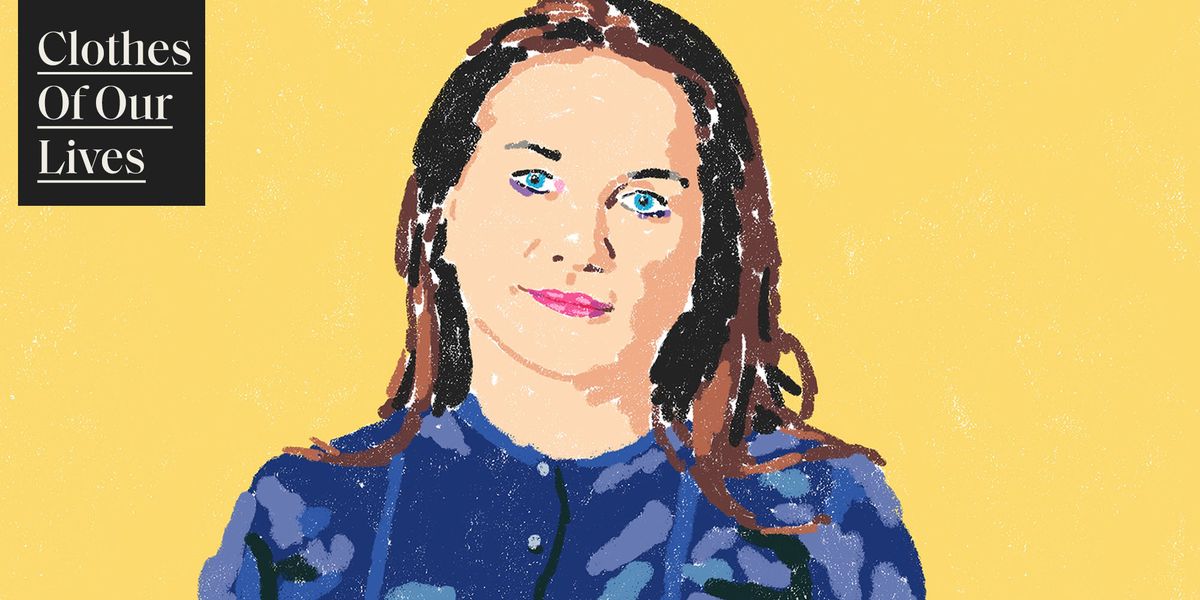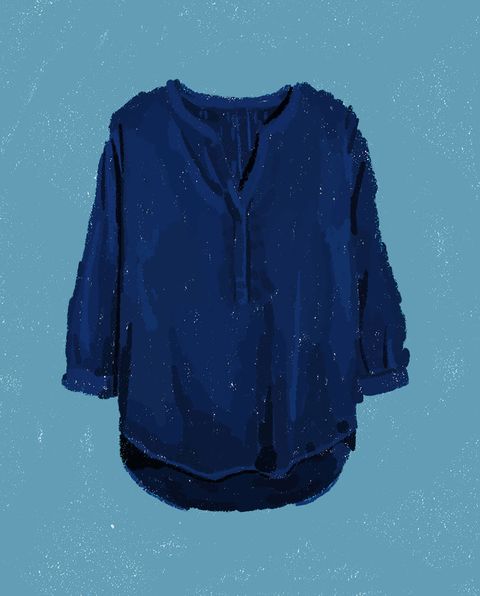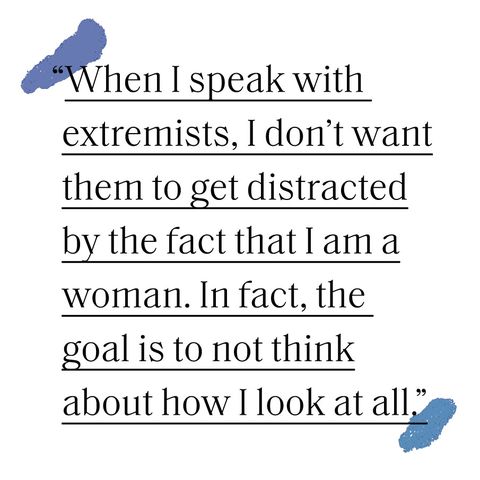ELLE’s new series Clothes of Our Lives decodes the sartorial choices made by powerful women—and explores why fashion is often on the front lines of communication. Today, we sat down with New York Times foreign correspondent Rukmini Callimachi to find out what she wears to interview the world’s most dangerous terrorists.
Last year I flew to the Central Asian country of Tajikistan to sit-down with a foreign fighter for ISIS named Hussein Abdusamadov. He was sentenced to life in prison for ordering the brutal murder of two American bicyclists.
The interview was a major get. It was the first time in over a decade someone from The New York Times had been able to go to Tajikistan—and Hussein wasn’t just any foreign fighter. He had joined the external operations arm of ISIS, the same wing that carried out the devastating Paris attack and the Brussels attack. He was sent back to his home country of Tajikistan with explicit instruction to find Westerners and kill them. Which he did.
When we met in a dark and damp prison in Dushanbe, the capital of Tajikistan, I knew the way I presented myself was vital in getting Hussein to open up to me. He has an animus towards people of my culture, and it was important that he saw me as somebody to be taken seriously, and also as somebody that would not be disrespectful of his world views.
For the interview, I chose jeans, black booties, and a trusty navy blue tunic from Ann Taylor, which has traveled with me all over the world from Iraq to Syria to Lebanon.
Everyone thinks about their appearances at work. For women in journalism, we often find ourselves tip-toeing a fine sartorial line between looking feminine and serious, but not stodgy. For female reporters covering Islamic extremism it’s on an entirely different level. We mostly interact with men, like Hussein, who are used to seeing women completely covered up. The fact that I rarely cover my head, and never cover my face, is already a transgression to them. I never want to push the boundaries and also show my arms, which would draw unnecessary attention to myself. I have to think both about looking serious and looking feminine. I enjoy being feminine, but if that dial goes one turn too far, I enter into an area where people don’t take me seriously. They just see me as a girl.
I prefer clothing with long sleeves that buttons all the way up past my collarbone. When I’m in a place where it’s dusty and dirty and dangerous, I avoid light colors, because I don’t want to have something on that immediately looks worn.
In war-torn areas like Syria, I also avoid primary colors that can be seen from a long distance. When I was there in February covering the battle to take back the last village under ISIS control, I avoided reds and bright blues and greens. This is something our security advisers at the Times impressed on us: wear colors that, at some level, exist in nature, because you want to blend in.
I aim to look serious and disciplined and respectful of the culture I’m in. But I also need to be in something that isn’t suffocatingly hot or uncomfortable, because I’m often in warm climates.
Truthfully, it’s not easy to find something that ticks all of these boxes. I got lucky two years ago when I discovered the Ann Taylor tunic at a mall in New Jersey. It’s a dark color, which is perfect, with long sleeves and high collar.
I loved it so much, I went back to the same store a month later, and purchased a second one. Now, I bring them both with me on reporting trips. After a day in the field, I hand wash the tunic, hang it to dry in the shower on a hanger, and rotate in the clean one the next day.
In Tajikistan, Hussein told me he stood by what he had done. He had absolutely no remorse for murdering innocent Americans and, given the chance, said he would do it again. As disconcerting as his words were, the revealing interview was a big success because he owned up to what he did.
I conduct dozens of interviews with ISIS members, and usually they’re afraid of the consequences they’re about to face or worried about skewing their court trial. They deny what they did or minimize or lie about their actions. But Hussein came out and not only said that he would do it again, but that he would also kill me if he could. It was very matter of fact. To me, it showed deep radicalization. He was so inside their system of thought that he was convinced what he did wasn’t just right, but a favor to the world.
When I speak with extremists, I don’t want them to get distracted by the fact that I am a woman. In fact, the goal is to not think about how I look at all. If they did, they wouldn’t talk to me at all. In that way, my tunic helps allow me to do my job.
This interview has been lightly edited and condensed for clarity.




